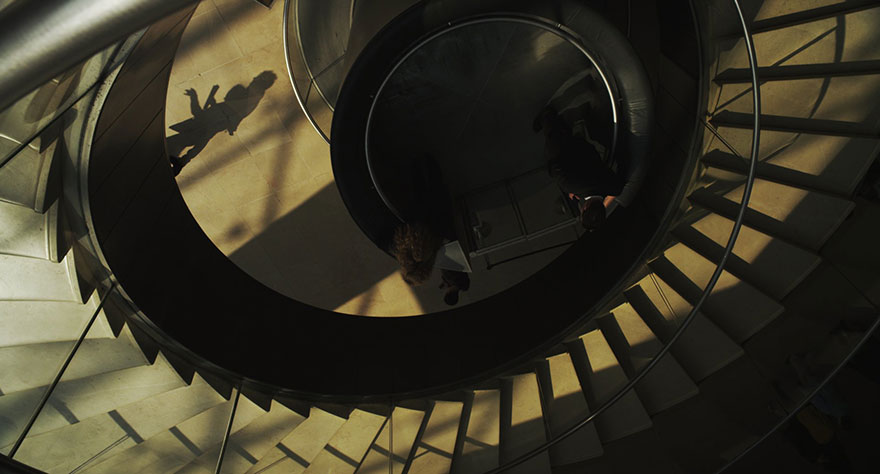
A stunning look at three different cities provides one dazzling visual after another.

A stunning look at three different cities provides one dazzling visual after another.
There’s a shot early on in Mark Lewis’ Invention that I can only describe as exhilarating, but I get the feeling it might not work on everyone in the same way it did for me. The sequence, a single take lasting over 10 minutes, starts as a black-and-white shot on top of a downtown Toronto building overlooking the cityscape. The camera slowly starts panning around in a circle, eventually aiming its sights towards the city’s downtown core (you can see the CN tower peeking out from behind a cloud). Eventually, the camera stops and locks in on a window in another building directly across from it. Suddenly the camera starts flying towards the window, goes through it (the moment the camera enters inside, the film switches to colour), flips upside down, then turns around and proceeds to zoom into the streets below to observe the cars and pedestrians.
I can’t deny that, on a basic level, there’s something I find exciting about watching what looks like a simple shot unexpectedly transform into an incredibly complex one. A pan turns into (I assume) a drone or crane shot, proceeds to do something seemingly impossible, and then redefines the familiar views of the city into something more abstract and mathematical (the window the camera peers through is split into three sections, and Lewis frames it to look like a three-dimensional plane). Lewis, along with cinematographers Martin Testar and Bobby Shore, employ this approach to three areas in different parts of the world: Toronto, São Paolo, and the Louvre in Paris. And aside from the opening and closing, Invention has no soundtrack whatsoever, letting the film play out almost entirely in complete silence (the film has been described as reminiscent of city symphony films of the silent era). The film rests everything on its visuals, and with so many downright dazzling scenes, it’s not hard to get past the silence.
That radical move might make it easy for some to dismiss Invention as more of an art installation (to be fair, part of Invention is made up of shorts Lewis made for the Louvre), but if anything, Invention might be one of the year’s most cinematic films. By stripping things down to the most vital element(s), and by putting all the emphasis on the camera and its movement, Lewis makes Invention a film that’s all about the act of observing and how powerful the camera can be in teaching viewers what and how to observe. This is apparent in the opening shot, where the camera slowly observes a sculpture, and through the way the camera glides and pans over almost every detail, frequently changing the interpretation and appreciation of the art piece. Even more fascinating is how Lewis extends this to the way he observes Toronto and São Paolo, capturing surreal images (primarily one of people walking along a closed down highway) or seemingly mundane parts of a city and, by using the camera’s placement and movement, generates a new, dynamic appreciation of the familiar. And by providing this distilled version of cinema, Invention turns into the sort of film that’s a distinct, powerful work that’s about the unique power of film.